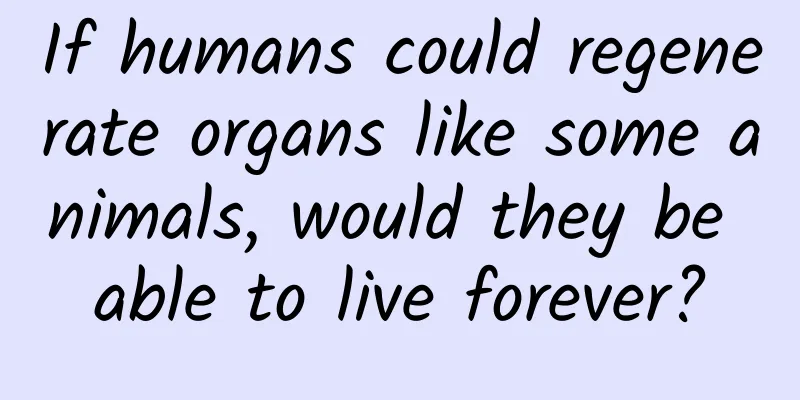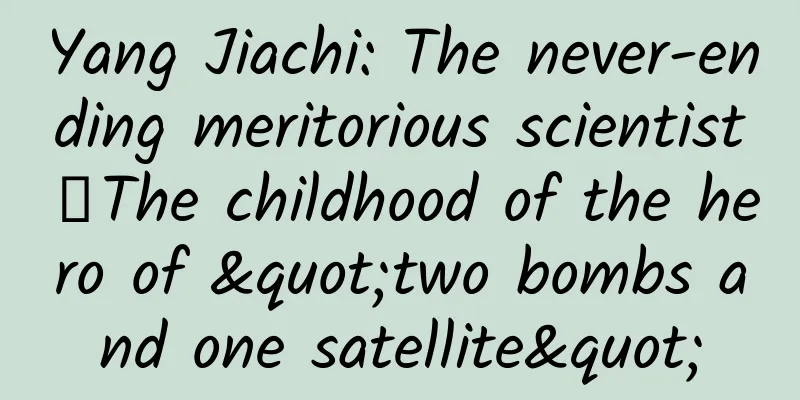If humans could regenerate organs like some animals, would they be able to live forever?

|
No matter who you are, whether you are poor or rich, whether you have made outstanding achievements or are mediocre, you will inevitably grow old and die in the end. This is not a big deal for other animals. Although survival is the first priority for all living things, other animals do not think about it because they lack self-awareness. However, it is different for humans. Some surveys show that most people can realize the true face of death before the age of 10 and begin to worry about it. Therefore, whether in ancient times or modern times, immortality is the ultimate dream pursued by humans. So can immortality be achieved? Death begins with aging, and the aging of the entire body is the accumulation of the gradual aging of various tissues and organs. From this point of view, reversing aging seems to be the key to curbing death. "Reversing aging" sounds too fantastical, so if aging is irreversible, is there any other way? Yes, that is to regenerate tissues and organs. This may sound like an unlikely thing, but it is actually possible. In nature, many organisms have the ability to regenerate tissues and organs, such as hydra. If any part of its body is cut off, it is possible to regenerate a new hydra. Of course, the body regeneration ability of animals cannot be directly transferred to humans. Although there are some organisms in nature that have the ability to regenerate, they all have one common characteristic, which is their simple structure. Take hydra as an example. It does not have any real "organs" in its body, so its body is made up entirely of stem cells, which can continuously divide and create new cells. When cells age or become damaged, they can directly eliminate these cells and create new cells to fill the original positions. However, this set of "Kung Fu" does not apply to complex life forms. Why? Because complex life forms require a large number of different differentiated cells to perform different functions. The liver needs highly specialized liver cells to realize its functions, and the kidneys need highly specialized kidney cells to realize their functions. In order for these cells to have corresponding functions, their ability to divide must be sacrificed, so the human body's tissues and organs cannot regenerate indefinitely. Is there really no way out? Not really. In 2006, Shinya Yamanaka won the Nobel Prize for discovering the secret of cell "rejuvenation". This life scientist found that induced pluripotent stem cells can induce differentiated somatic cells to differentiate into various human tissue and organ cells. This discovery laid a theoretical foundation for the regeneration of human tissues and organs. So specifically, how can we regenerate tissues and organs? There are many methods, such as stimulating the proliferation and differentiation of existing stem cells through specific methods, or introducing exogenous stem cells or progenitor cells. For example, if there is a problem with the human liver, transcription factors can be used to induce liver cells to differentiate again, thereby regenerating liver tissue to repair the original damage. This is not just a theory. In fact, similar technologies have entered clinical trials, such as the technology for making functional human insulin-secreting cells. Human tissues and organs can regenerate. Does this mean immortality is possible? It's not that simple. Although human tissue and organ regeneration technology has broad prospects, there are also safety issues. For example, some contaminated undifferentiated cells may remain in the process, and these remaining undifferentiated cells may bring tumor risks. In addition, we always describe the human body as a machine, but there is actually an essential difference between the human body and the machine. The machine can be replaced wherever it is broken, but can the human body really do the same? In fact, it cannot, because the human body is a whole, and there are many secrets in it that we do not know yet. Even if we replace all the problematic organs, it does not mean that we can prevent the body from aging and death. |
<<: Chinese and Japanese tea culture: Both find the other side incredible
>>: Popular Science Illustration | Do astronauts’ extravehicular activities also require “windows”?
Recommend
Xia Qijiang's "16 Zero-Based Watercolor Painting Video Courses"
【Lecturer Introduction】 Xia Qijiang, a well-known...
Taking advantage of the Big Snow solar term, these 19 brand inspirations are worth a look!
The Big Snow solar term is coming This name is a ...
Net revenue of 343.1 million US dollars, NetQin turns to smart cars and wants to be a facilitator
On April 7, 2017, NetQin announced its unaudited ...
In addition to the Mausoleum of Emperor Wen of Han, are there any other major discoveries that have rewritten textbooks?
In the past two days, every time I opened my Mome...
What does Tik Tok musician mean? Introduction to knowledge about Tik Tok musicians
There are many musicians on the Tik Tok short vid...
How to use IIS to build a website on a VPS server?
For SEO website optimizers, knowing how to build ...
Hankook's senior management reshuffles to place more emphasis on China
Hankook Tire and its holding company Hana Tire Wo...
Eat me? Want to eat me again? Eat me again...
Food lovers must have a love-hate relationship wi...
Doushen Chinese Language "24 Lessons on Primary School Reading Techniques"
Doushen Chinese Language "24 Lessons on Prim...
1 core, 5 techniques, and 3 principles for writing good titles
Zhang Xiaolong said: Even the smallest individual...
"Hot Water Expert" Questioned: Is AO Smith a Domestic Noble Brand and Not as Popular in the United States?
AO Smith, which occupies a relatively high market...
Foreign online earning: Copy and paste money-making project using Google News to easily earn $100+ a day
Many foreign online earning projects are basicall...
Striving for youth is just about climbing! Come on, students!
2022 College Entrance Examination Today officiall...
Advanced Negotiation Practice Course: Creating a Third Choice and Achieving a Win-Win Relationship
Course Catalog 01. Why should we focus on the &qu...
A 28-year-old guy suddenly had an acute myocardial infarction. He stayed up late to play games and smoke for 6 years. If you have this habit, would you tremble?
The weather has turned cold all over the country,...









